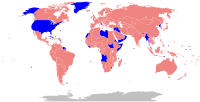Value added tax

Value added tax (VAT) is an extra tax people have to pay when they purchase goods or services. It's like a sales tax but instead of a flat percentage added to each purchase, the VAT is added in stages (or “value added”) throughout the production and distribution process. So for instance, the first company involved in making a product might have to pay a certain amount of VAT on the materials and services they buy from other companies - that’s the first “value added.” Then, when that company sells the finished product to another company, they have to add the VAT they paid to the final price - that’s the second “value added.” Finally, when the customer buys the product, they have to pay the full VAT amount - that’s the third “value added.” So in the end, everyone involved in the production and distribution process has paid their share of the VAT.
Related topics others have asked about:
